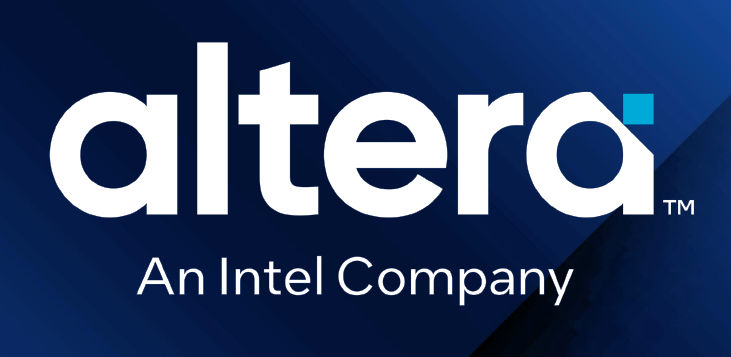A Fable:
Once upon a time, in the incredibly wealthy Kingdom of Silicon, there lived a scrappy company named Duchess Altera, who shared the Duchy of FPGAs with an archrival named Duchess Xilinx. For more than three decades, Duchess Altera and Duchess Xilinx battled for control of the Duchy of FPGAs. Then, Duchess Altera forged an alliance with Archduke Intel, who ruled the much larger and much richer Grand Duchy of Microprocessors. Sometime later, Duchess Xilinx joined the House of Zen, which competed with Archduke Intel in the Grand Duchy of Microprocessors, but that’s a different fable.
Archduke Intel brought Duchess Altera into a castle named House Xeon. “Your new name in House Xeon is Baroness PSG,” said Archduke Intel. “What kind of name is that?” asked Altera. “It’s your name now. Use it!” replied the Archduke. You now serve House Xeon. Duchess Altera didn’t like the new name or the title demotion very much. Altera’s many followers, who held little allegiance to House Xeon, had a hard time remembering the name PSG. Over time, the name Altera started to fade from the collective memory of the residents living in the Kingdom of Silicon.
After eight years of dwelling in House Xeon, Duchess Altera met the Wizard Gelsinger, who undid the spell binding Altera to House Xeon. Altera is now once more in control of their own destiny and has returned to dwell in the Duchy of FPGAs. Just before Altera left House Xeon, the Archduke of Microprocessors branded Duchess Altera’s backside with a small blue square to show their continued connection to House Xeon.
Intel PSG, the FPGA supplier formerly known as Altera, is spinning back out of Intel and will be known as…
Altera, a wholly owned Intel company
It was the obvious choice. There’s plenty of valuable brand equity left in the old name. In fact, Intel PSG is still shipping parts marked “Altera” nine years after the 2015 acquisition. Intel never changed the packaging on existing parts. Although the new company name is the same as the old one, the logo is different:

Image credit: Altera
Altera’s connection to Intel started in February 2013, when fabless Altera announced that it was switching its foundry business for future FPGAs from TSMC to Intel in response to arch-rival Xilinx’s earlier announcement that it was adopting TSMC for its future FPGA manufacturing. In June of that same year, Altera announced that it would have test chips for its new 14nm Stratix 10 FPGAs manufactured at Intel using a 14nm FinFET process. However, the Stratix 10 FPGAs were delayed, Intel acquired Altera in 2015 and renamed the company the Intel Programmable Solutions Group (PSG), first details of the promised Stratix 10 FPGAs weren’t announced until 2016, and Stratix 10 chips didn’t ship until late 2019.
Despite these rather painful teething problems, Intel PSG successfully produced several Stratix 10 subfamilies and then embarked on the even more ambitious Agilex FPGA series, based on Intel’s 10nm SuperFIN process, now called Intel 7. Intel PSG’s roadmap includes several Agilex FPGA families ranging from the low-end Agilex 3 devices through the mid-range Agilex 5, the high-performance Agilex 7, and the super-performance Agilex 9 device families. At the time these Agilex families were announced, it seemed evident that the Agilex FPGA family would eventually supplant Intel PSG’s older FPGA families including Cyclone, Arria, and Stratix. In an exclusive interview prior to the announcement, Altera’s CEO Sandra Rivera confirmed this shift.

Altera’s Agilex FPGA subfamilies. Image credit: Altera
The newly reconstituted Altera will extract its sales and FAE forces from Intel’s corporate sales team. (Altera’s FPGA sales and FAE teams were never fully integrated with Intel’s, said Rivera.) In addition, Altera will be maintaining relationships with its existing distributors. Rivera underscored the essential nature of the relationships between Altera and its current distributors, including Arrow and Macnica. In fact, she said, Altera plans to invest more money and effort into growing these distributor relationships.
Some revealing numbers from the Altera press deck indicate how the company views the markets for these various Agilex FPGAs. Altera thinks that its high-end Agilex 7 and Agilex 9 FPGAs have a market size in the range of hundreds of customers. Agilex 5 FPGAs potentially reach thousands of customers and Agilex 3 FPGAs potentially fit the needs of tens of thousands of customers, which make these two FPGA families good products for distribution.
Some Intel Agilex FPGAs and all Intel Stratix FPGAs are based on chiplets with one large logic die (or two logic dies in the case of the Stratix 10 GX 10M FPGA) with multiple I/O chiplets, leading the way for Intel’s increased use of chiplets in its CPUs and GPUs. This situation hit a high-water mark when Intel announced the Ponte Vecchio GPU with 47 chiplets in 2022. Despite the technological leadership, Intel remains a CPU-centric semiconductor vendor.
In fact, I’ll go further and say that Intel remains a Xeon-centric semiconductor vendor. That’s because Intel relies heavily on the revenues from its flagship server processor family. Altera will no longer need to kowtow to the marketing needs of Xeon, although the new company will likely find it convenient to make the connection with certain customers.
Intel’s Xeon CPUs created marketing headwinds for Intel PSG. The group’s FPGAs were force-fit into a support role for server CPUs. Then GPUs became the industry darlings, thanks to Nvidia’s never-ending efforts to steal the spotlight, and FPGAs dropped down another rung on the Intel marketing ladder. That’s a shame, because Intel’s FPGAs, especially members of the Agilex FPGA families, are pretty capable devices in their own right and are quite competitive with archrival AMD’s (formerly Xilinx’s) offerings.
Meanwhile, CEO Pat Gelsinger has been thoroughly restructuring Intel to focus on regaining semiconductor technology leadership and developing correspondingly advanced designs for new CPUs and GPUs while becoming a leading semiconductor foundry to the rest of the industry. That’s a very tall order and Gelsinger knows that he needs no extra distractions on this ambitious journey. Whether it was Intel PSG’s desire to steer its own course, to get out from under the Xeon shadow, or Gelsinger’s desire to focus on core competencies, the decision to spin out the FPGA group seems to have been made some time in 2023, which is when the upcoming split was first announced. On February 29, Intel announced its new name and its plans.
Thanks to previewing this spinout in my February articles covering Altera’s early history, I’ve already gotten many reader comments that suggest that this spinout of Altera is yet one more example of how Intel has trouble staying in markets after it acquires another semiconductor vendor, or any vendor for that matter. My perspective is different: That’s business. Needs change. Priorities change. Competitors change. Good corporate strategy accommodates these changes. It rolls with the punches.
I think that setting Altera free once more (as a wholly owned Intel company) is fundamentally good for the semiconductor industry. Top management can now chart an FPGA-centric course instead of forcing their strategy to align with the needs of the Xeon mafia. At the same time, Intel Foundry gets a new external customer that is already familiar with and uses the Intel design tools and semiconductor processes. Intel PSG has shown plenty of innovation while it was attached to the Intel mothership. Now that Altera is out of the shadow of the Archduke of Microprocessors and House Xeon and is free to chart its own course, serve its own customers, and make its own partnerships, I foresee even greater things to come for FPGAs.
(Note: During my career, I’ve worked for both Intel PSG and Xilinx. As a nonpartisan court jester in the Duchy of FPGAs, I grind my FPGA axe on both sides.)
For an account of Altera’s early history, see:
Altera: The Once and Future FPGA Supplier, Part 1
Altera: The Once and Future FPGA Supplier, Part 2





“As a nonpartisan court jester…”
Ah, that explains what you were wearing the last time we met LOL